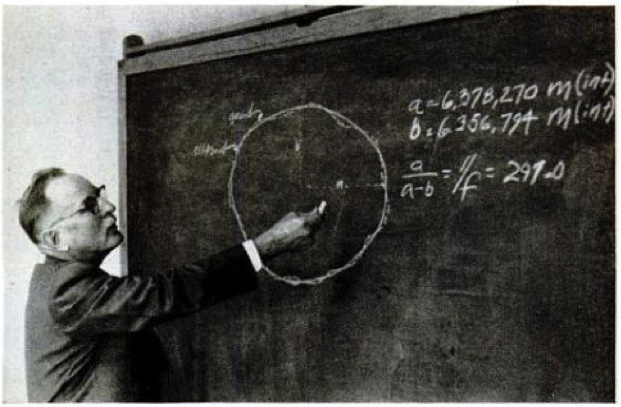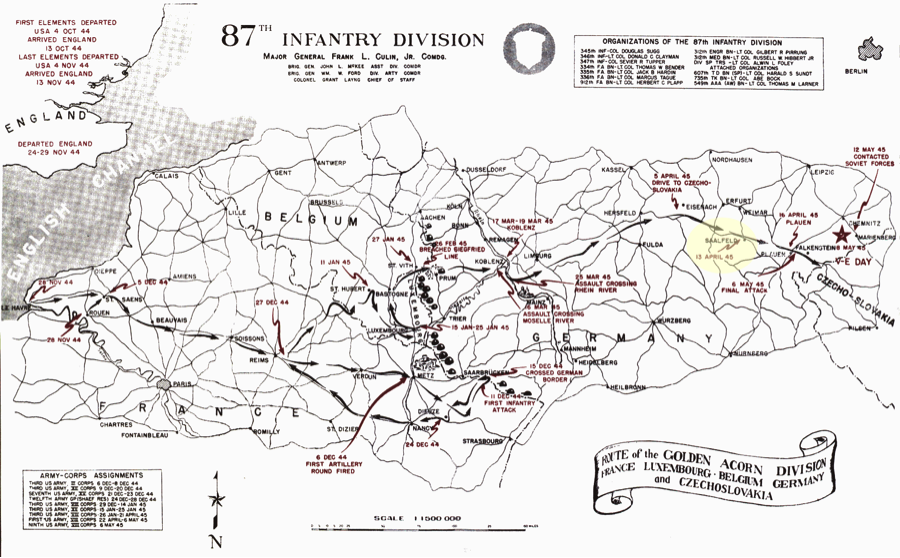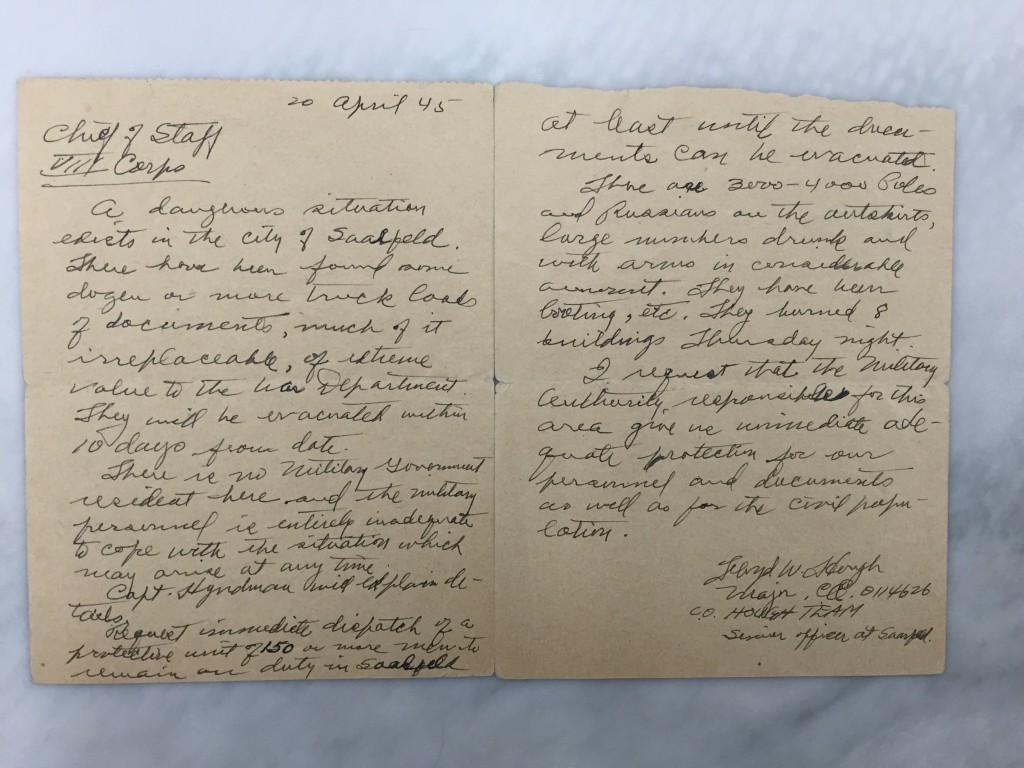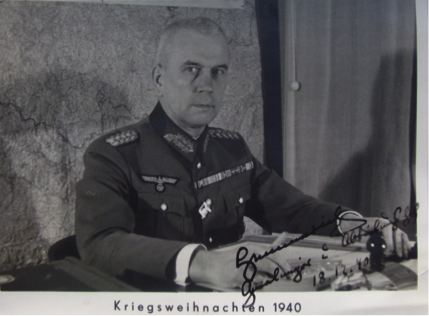By Matt Peitersen 8/3/2015
Although NGA (National Geospatial-Intelligence Agency) is America’s youngest intelligence agency, it has surprisingly old roots: one organization sometimes claimed as a predecessor is the Union Balloon Corps, 1861-1863. It’s a common belief in our profession that the American Civil War saw the first use of military observation balloons. It’s also sometimes held that aerial photographs first proved themselves valuable sources of military intelligence. I hadn’t thought much about this “common wisdom” until a colleague challenged me to prove it.
While preparing this story, I reviewed over 4000 period photographs. I visited the National Archives and Records Administration (NARA), whose Matthew Brady Collection supplied most of the illustrations for this article. I also reviewed the official records of the Union Army, and consulted the literature (see references below). And while I found a significant number of photographs of the balloons themselves, we could not find a single example of a photo taken from a balloon during the hostilities. Nor could I find any records that such photos had been taken, although there is an account of a failed attempt. Our conclusions, heavily supported by the evidence, are:
- While balloons were used for observational purposes during the Civil War, this was not their first appearance. Almost seventy years before (June 1794) the French army pioneered the use of balloon reconnaissance at the battle of Fleurus. (Figure from Wise).
- There is no evidence for the use of balloons as aerial photography platforms during the Civil War. Hand-drawn maps were, however, created by observers aboard balloons. The below map of Virginia was drawn by a balloon observer. (From Smithsonian Institution).
- Aerial photography probably didn’t occur until much later than the Civil War. The first known military aerial photo was taken at the relief of Ladysmith, during the Boer War.
Of course, absence of proof is not proof of absence. Perhaps the photographs were taken, but lost over time, much like the pioneering work described later? This hypothesis is feasible, but since ground photos of balloons and hand maps drawn by balloon-based observers have survived, why wouldn’t the valuable air photos be preserved?
Likewise, we do have records of an unsuccessful attempt at taking photos from a balloon, so why are there no records of successful attempts? And if, as a recent manuscript stated, balloon photography proved an excellent military tool, why are there no surviving intelligence products? Or even mentions of them in the accounts written by military commanders? Even the officers who lauded the value of balloon reconnaissance, such as Union Army Commander General George McClelland, failed to mention photos.
But don’t take my word for it. I consulted with my colleagues at the Smithsonian Institution, Air Force, and Army. Dr. Tom Crouch, the Senior Curator for Aeronautics at the National Air and Space Museum (NASM), and author of “Eagles Aloft”, a history of U.S. Balloons, was first to reply:
“You are quite right, there are no known photos taken from balloons on either side during the Civil War.” In his book, Crouch states that it is “…ironic that not a single photograph would be taken from a balloon during the course of the war.”
The Air Force Historical Studies Office referenced Crouch in their reply. The U. S. Army Center of Military History also confirmed the absence of balloon photos from that period, adding that the earliest mention of Army aerial photography they could find was taken in 1909—from an airplane.
The literature likewise refutes the concept of Civil War air photos. Haydn’s 1941 account includes five pages detailing plans and suggestions for photography, followed by one blistering sentence repudiating its existence:
“Thus from all the evidence examined, the conclusion follows that aerial photography, though recommended by laymen, scientists, professional photographers, and army officers, was not carried on by the balloon corps.”
If the experts agree that they don’t exist, why do so many people in our community believe in the existence of these mythical Civil War air photos? Partly, this is a rational assumption—the technology existed at the time, so why wouldn’t they make use of it? (This points out a paradigm shift discussed later.
The main reason, however, is simply the fact that we’ve all heard it, from so many sources, some of whom should clearly be “in the know” about such things. There’s a natural tendency for humans to believe stories, and pass them on, if they hear them often. The “crowd sourcing” of information in social media relies upon the assumption that the majority view is likely to be correct.
However, truth is not a democracy, and this assumption can break down in spectacular ways. Folklorists, the researchers who study oral tradition, have documented thousands of cases of popular, but untrue, stories, which they call “urban legends”. Examples include multiple accounts of girls who “fried their insides” in tanning booths, the resurrected pet bunny, and the used car that is sold at a deep discount because the dealer can’t get rid of the “smell of death”. Many of these tales are fantastical, but such legends are prosaic, and appeal to people’s natural attraction to a good story, even at the expense of facts. Almost all of these urban legends “multiply”—people who claim that they heard from friend of a friend about the microwave girl, will also believe that it is true when they hear about another instance (with similarly false details). The fact that it has happened multiple times tends to strengthen rather than make them question their belief. Several of my colleagues were amongst the many GEOINT professionals who believed in the existence of Civil War aerial photography, which appears to be an example of “professional legends.”
Even discounting the use of photography, did reconnaissance balloons prove to be valuable intelligence assets? Although the value of a mobile, incredibly tall watch tower would seem to be undeniable, the answer is still in dispute. Although some commanders lauded the new technology (ref), others were more critical. The largest effort, Thaddeus Lowe’s Union Balloon Corps, served during the Peninsular Campaign (1862), which is famous for absolutely abysmal military intelligence of the Union Army. Its commander, General McClellan, was convinced he was outnumbered (he actually had a substantial edge in numbers and quality) and retreated after every Union victory. The presence of balloons failed to reveal that the Confederate defensive lines at Yorktown were manned by a few soldiers feigning activities, or that many of the “artillery” were actually “Quaker guns”–logs that had been painted to resemble cannon barrels. This is an early example of “spoofing” being used against aerial reconnaissance. And the most telling evidence questioning the value of balloons? The Union Balloon Corps was disbanded in 1863, well before the end of the war. So while the balloons may (or may not) have been of value, they certainly didn’t “prove” it to most of the Army.

This leads us to the question: why didn’t anyone take air photos from balloons? The technology certainly was available. French pioneer Gaspard-Felix Tournachon (better known as “Nadar”) became the first person to take aerial photographs in 1858, but none have endured; the first photo that actually survived was taken by James Wallace Black and Samuel Archer King in 1860 (see above image). The founder of the Union Balloon Corps, Thaddeus Lowe, clearly planned to take such pictures and attempts were made at least once (In July, 1862, James Allen of the Union Balloon Corps took some photographers up, but strong winds intervened). Given the apparent obvious advantages of air photos, why didn’t this happen?
Crouch believes that primary reason is “the fact that contemporary photographs probably did not offer the resolution over a range of distances, or the level of detail required from aerial reconnaissance.” This is just one limitation to the technology of the times, however.

Early photography was a complex discipline requiring a substantial amount of skill. Unlike Nadar, who was a photographer before he was a balloonist, there is no reason to believe that any of the Civil War aeronauts had this skill. The tripod-mounted cameras of the time were bulky and awkward, and would have been difficult to handle aboard the small balloon gondolas. More telling, they required very long exposure times—5 to 30 seconds, or longer. The swaying motions of balloons would obviously have major effects at this speed. Indeed, the slow exposures explains why no action photograph was ever taken during the war. But the most serious limitation had to do with the nature of the photographic medium—a glass plate, which had to be prepared with chemicals just moments before being inserted into an already aimed and focused camera. Once the exposure was complete, the plate would have to be immediately developed. Since these activities had to take place in absolute darkness, a portable darkroom had to accompany the photographer.


This explains the size of Nadar’s gondola: it had to contain a dark room. (It also carried paying passengers). The two-story structure require a truly enormous balloon to lift in—one of Nadar’s designs contained 210,000 cubic feet. Lowe’s tiny observation baskets were clearly too small to contain a darkroom, and the balloons in use couldn’t have lifted one anyway. Lowe’s smallest balloon was less than a tenth the size of Nadar’s behemoth, and his largest, Intrepid, only contained 32,000 cubic feet of hydrogen gas.

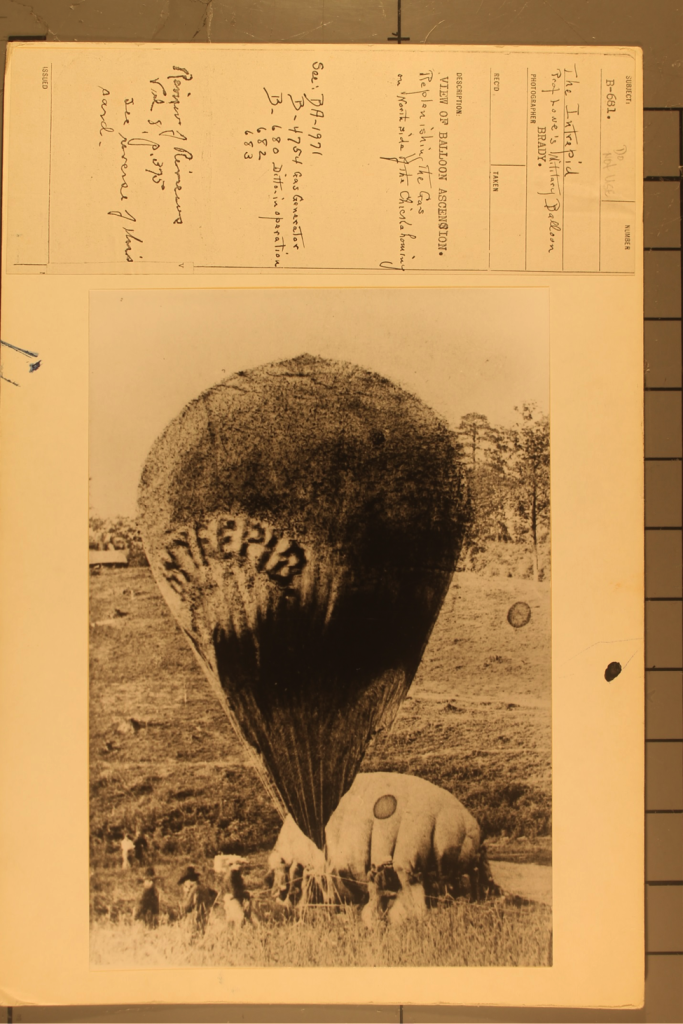
Photography would not have fit the operational tempo, anyway. With the exception of sieges such as Petersburg and Vicksburg, most Civil War combat was pretty mobile. The armies were constantly on the march, and by the time a photograph was brought down to the ground and transported by courier to headquarters, the enemy would have been long gone. In contrast, an observer could telegraph a few key observations to headquarters in real time, a far more efficient system.
The fact that we frame this question as, “why didn’t they”, shows how much our thinking has changed since then. Denizens of the time probably would have asked, “Why would they?”. The ubiquity of overhead imagery now guarantees that we all pretty much see its value. In the 1860s, most people were unfamiliar with photography, and would not immediately assume it was useful. There was no NPIC (National Photographic Intelligence Center), no team of trained imagery analysts, to interpret the photographs. And from a military intelligence perspective, its value at the time is questionable. Early air photos were usually shot looking straight down. Since balloons were tethered behind the lines, this would not have revealed much. Shooting out would have been a requirement, and there were no cameras with zoom lenses yet—they were all optimized for portraits. What would a photo, shot from a balloon moored behind, the lines, at extreme oblique angles, even have added? Blurred images of tiny antlike soldiers, uniforms unrecognizable (not that Confederate were very uniform anyway), marching in lines?
Although Civil War balloons failed to achieve the notable “firsts” mentioned above, this doesn’t mean that they didn’t lay claim to quite a number of others. These include
1st air encounter. At one point both Union and Confederate balloons were in the air.
1st artillery observer. Balloons were used to adjust artillery fire.
1st aircraft carrier. Balloons were launched from boats (see below).
1st conflict between science and military. Lowe and his aeronauts were frequently in dispute with Union officers such as Lt. George Armstrong Custer, who felt that only military-trained men would make proper observers. Military leaders didn’t trust the balloon aeronauts’ reports. Custer, who served as a military balloon observer, later revealed a widespread army belief that “it was to the interest of the aeronauts to magnify their statements and render their own importance greater, thereby insuring themselves what might be profitable employment” (Jarrow).
1st problems with aeronautical contractors. The military frequently clashed with the aeronauts. When Captain C. B. Comstock of the U. S. Army Corps of Engineers gained oversight, he cut Thaddeus Lowe’s salary by 70%; Lowe ended up resigning. Several aeronauts claimed to have never received full compensation from the government. And the entire program ended up being cancelled in 1863.

So, while it makes a powerful and pithy statement to say that the Union Balloon Corps was an early predecessor, calling it “America’s First NGA” is a stretch. In reality, the Union Balloon Corps; only real connection to GEOINT being a few hand-drawn maps. It can, however, claim to be America’s first Air Force.
One lesson that can be learned from my experience, is that even the most widely believed “common knowledge” can prove to be wrong. All assumptions, no matter how basic, need to be challenged from time to time. There’s no excuse for a scholar failing to research his topic adequately.
References:
Air Force Historical Studies Office, private correspondence, June 4, 2015.
Crouch, Tom, Senior Curator, National Air and Space Museum Smithsonian Institution, private correspondence April 20, 2015.
Crouch, T. D., Eagles Aloft: Two Centuries of the Balloon in America, Smithsonian Institution Press, 1983.
Crouch, T. D., Lighter than Air: An Illustrated History of Balloons and Airships, Johns Hopkins University Press, Baltimore, 2009.
Davis, C. W. and B. L. Wiley, the National Historic Society, Civil War Complete Photographic History, Tess Press, New York, 2000.
Dupuy R. E. and T. N. Dupuy, The Encyclopedia of Military History, Harper and Row, New York, 1970.
Evans, C. M., War of the Aeronauts, A history of Ballooning in the Civil War, Stackpoole Books, Mechanicsburg, 2002.
Haydon, S., Aeronautics in the Union and Confederate Armies with a Survey of Military Aeronautics Prior to 1861 Vol. 1, Johns Hopkins University Press, Baltimore, 1941.
Historical Resources Branch, U. S. Army Center of Military History, private correspondence, June 22, 2015.
Jarrow, G.Thaddeus Lowe and the Civil War Balloon Corps, Boyds Mills Press, Honesdale, 2010.
Lee, E., To the Bitter End, Viking, London, 1985.
Knauer, E., Ed., The Civil War: An Illustrated History, Time Books, New York, 2011.
War Department, The War of the Rebellion: A Compilation of the Official Records of the Union and Confederate Armies, Government Printing Office, Washington, 1884.
Wise, J., Through the Air: Forty Years Experience as an Aeronaut, To0day Printing, New York, 1873.





